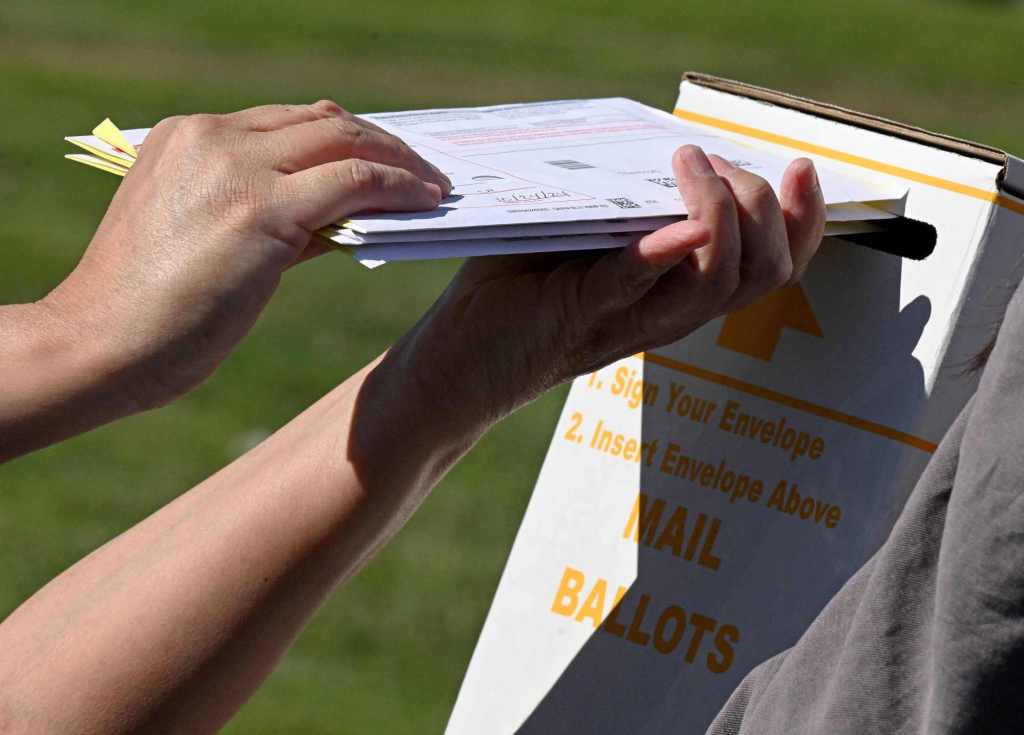How can you be sure that your ballot is in good hands after you cast it in the Nov. 5 General Election in San Bernardino County?
Stephenie Shea, who oversees San Bernardino County elections as the registrar of voters, gave a media tour on Monday, Oct. 28, at the ballot processing site in San Bernardino to highlight the stringent measures in place to ensure election safety and security in San Bernardino County.
Before ballots even make it to the processing site, Shea explained some of the core precautions taken to ensure they’re safe at their drop-off location.
Looking for candidate information, ballot measure breakdowns and more as you fill out your ballot for the Nov. 5 election? Visit our voter guide.
“The drop boxes are secure,” she said. “The outdoor boxes are made of 18 gauge steel, they’re bolted from the inside and they have cameras on those boxes. Not only that, they’re placed in high visibility, high traffic areas and those ballots are collected regularly.”
Earlier this year, the county doubled down on its ballot box security after the Board of Supervisors voted unanimously to install wireless cameras at the roughly 70 ballot drop box locations across the county.
Prior to that decision, about half of the county’s drop boxes were already placed in locations monitored by existing cameras.
“We cannot predict how long it will take to get the necessary approvals for sites not owned by the county, so unfortunately, we cannot guarantee the timing for all camera installations,” Shea wrote shortly after the July 9 decision. “However, the Registrar of Voters is committed to this project even if it extends beyond the 2024 General Election.”
After your ballot is retrieved — by mail, out of a drop box or in-person — the counting process begins: When ballots arrive at the Registrar of Voters office in San Bernardino, the return envelopes are first mechanically sorted, with their barcodes scanned and signatures photographed. Then, ballots are then taken out of the return envelopes and examined to make sure there are no obvious problems.
The ballots are then taken to a more restricted area — staff here have differently colored vests, which shows they’re allowed in this area — where the ballots are fed into sorting machines. The ballots are then scanned at high speed by computers, which look to see that the circles voters fill in to make their choices were properly filled in.
Watch the registrar of voters answer common election security questions
When the computer kicks out a ballot that hasn’t been properly filled out, a two-person team looks at each ballot, trying to determine if it’s clear what the voter intended to do. If not, the voter will be contacted directly to help clear things up.
Finally, the votes are tallied on computers that are connected to each other, but not connected to the internet. The computers are wiped clean and the software is freshly installed prior to each election, to erase any possible issues with the computer. Like other rooms where ballots are handled, no one is allowed to be in the tabulation room alone, and it’s monitored by surveillance cameras and has large picture windows for observers to view everything going on inside.
If a ballot needs to be “cured” — typically due to missing or mismatched signatures — the voter has up until 5 p.m. two days before the county certifies election results. Counties are required to certify their election results and submit them to the secretary of state no later than Dec. 3, but when they expect to complete the process may vary by county office.
If you get that notification, you can fill out a form to provide a signature and confirm that you voted your ballot, according to the secretary of state.
Originally Published:



